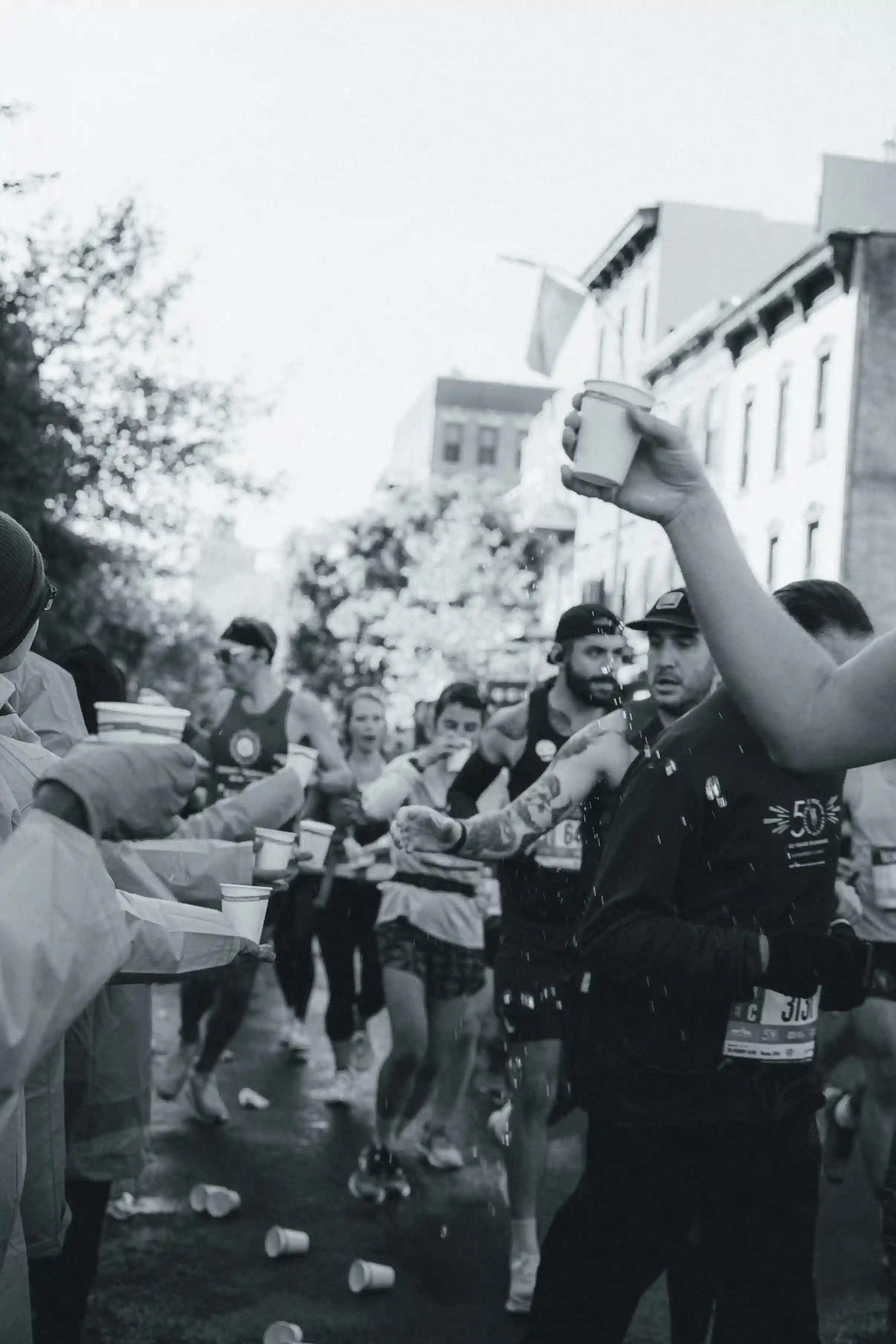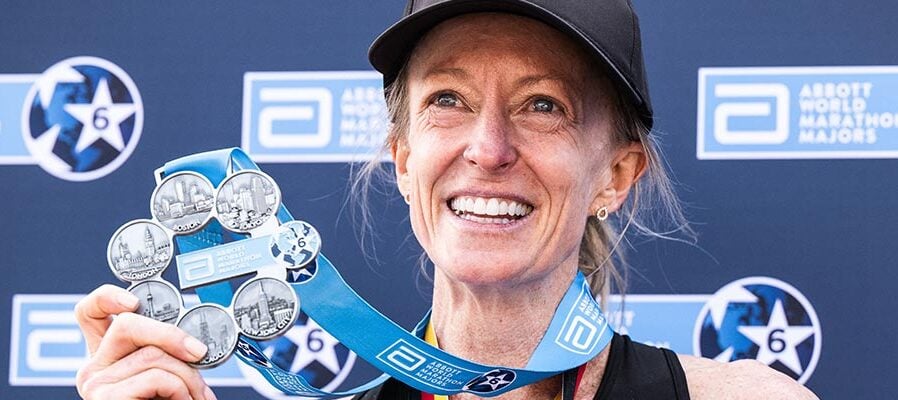If you’ve watched a marathon, chances are you’ve seen runners squeeze brightly-colored gel packs into their mouths or toss back dried fruit mid-race. This nutrition strategy is critical for running 26.2 miles, but many still ask the question – do I need to fuel during a half marathon?
In most cases, the answer is yes. Running a half marathon depletes your glycogen stores enough that you need to consume salt and sugar to replenish the amounts in your body while running. If you plan on running a half marathon, keep reading to learn exactly what fueling is and how to do it.
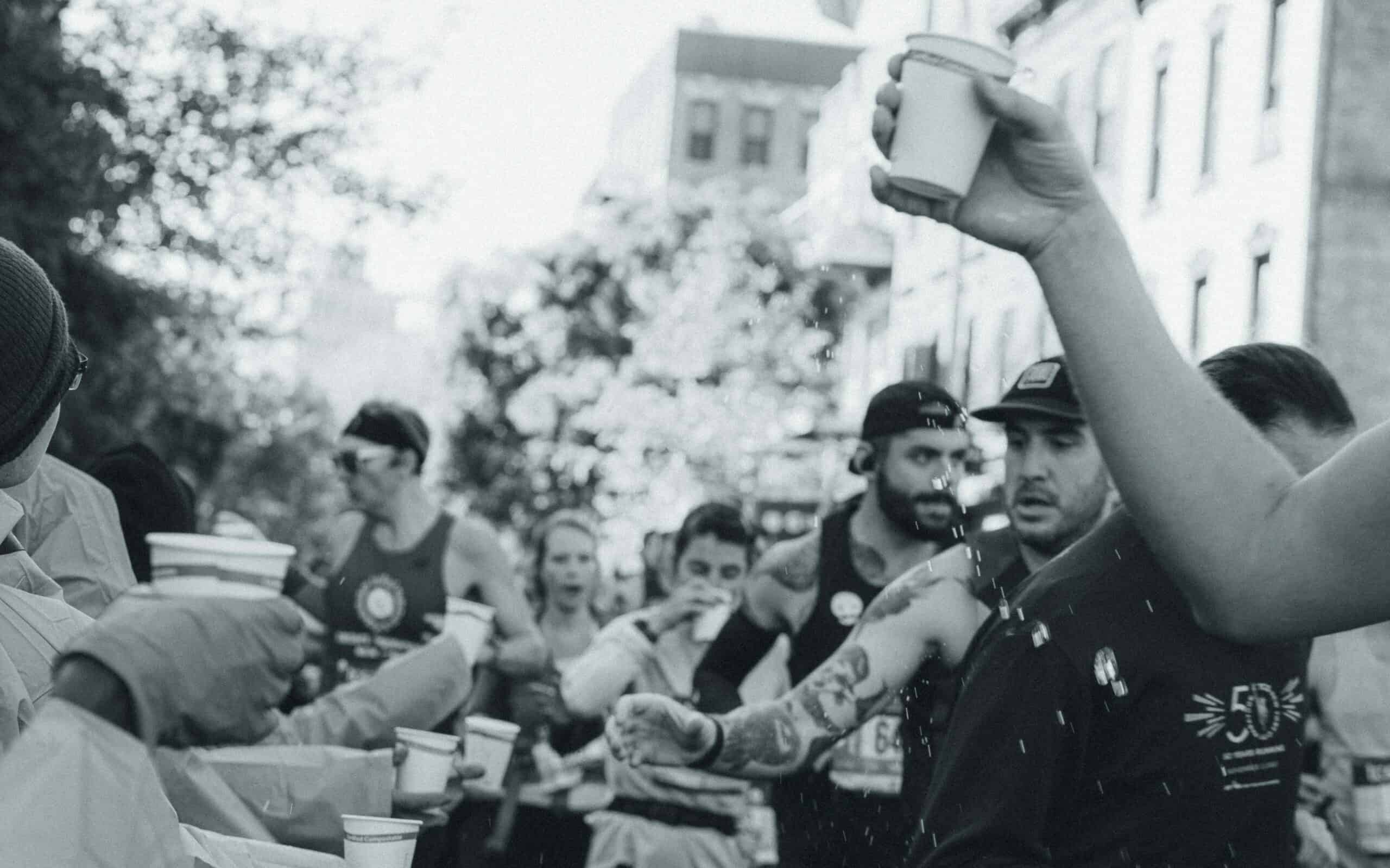
Why You Need to Fuel During a Half Marathon
Let’s start with the basics. When you go for a run, your body needs energy to keep moving. This energy comes from the food you eat. While you get some running energy from protein, most of it comes from carbohydrates and fat.
Fat is your longest-lasting source of energy. Your body can run for a long time (think dozens of miles) relying on your body fat alone. Body fat, simply, is excess energy from food, stored where it can be access.
It isn’t a smart idea to rely on your body fat for energy—we’ll explain why soon—but it is possible.
What Are the Benefits of Fueling During a Half Marathon?
Unlike fat, your body doesn’t have large stores of carbohydrates for you to access while running. You likely store less than 2,000 calories worth of glycogen (the molecule derived from carbs) in your liver and muscles at the beginning a race.
Your body will burn through this store of accessible carbohydrates in less than 90 minutes. The more intense your exercise, the faster you’ll burn through it.
If it takes you longer than an hour to run a half marathon (like it does for most of us), you need to provide your body with more carbohydrates while you run. This is called fueling.
What happens if you don’t fuel during a half marathon?
Your body will burn through all its available glycogen stores and switch to relying on fat.
While this may seem fine, here’s the problem. It takes your body longer comparatively to access the energy produced from fat than from glycogen. As a result, you fatigue faster and run more slowly.
If you provide your body with a steady dose of carbohydrates (think, sugars) while running, it won’t have to switch to fat-burning mode.
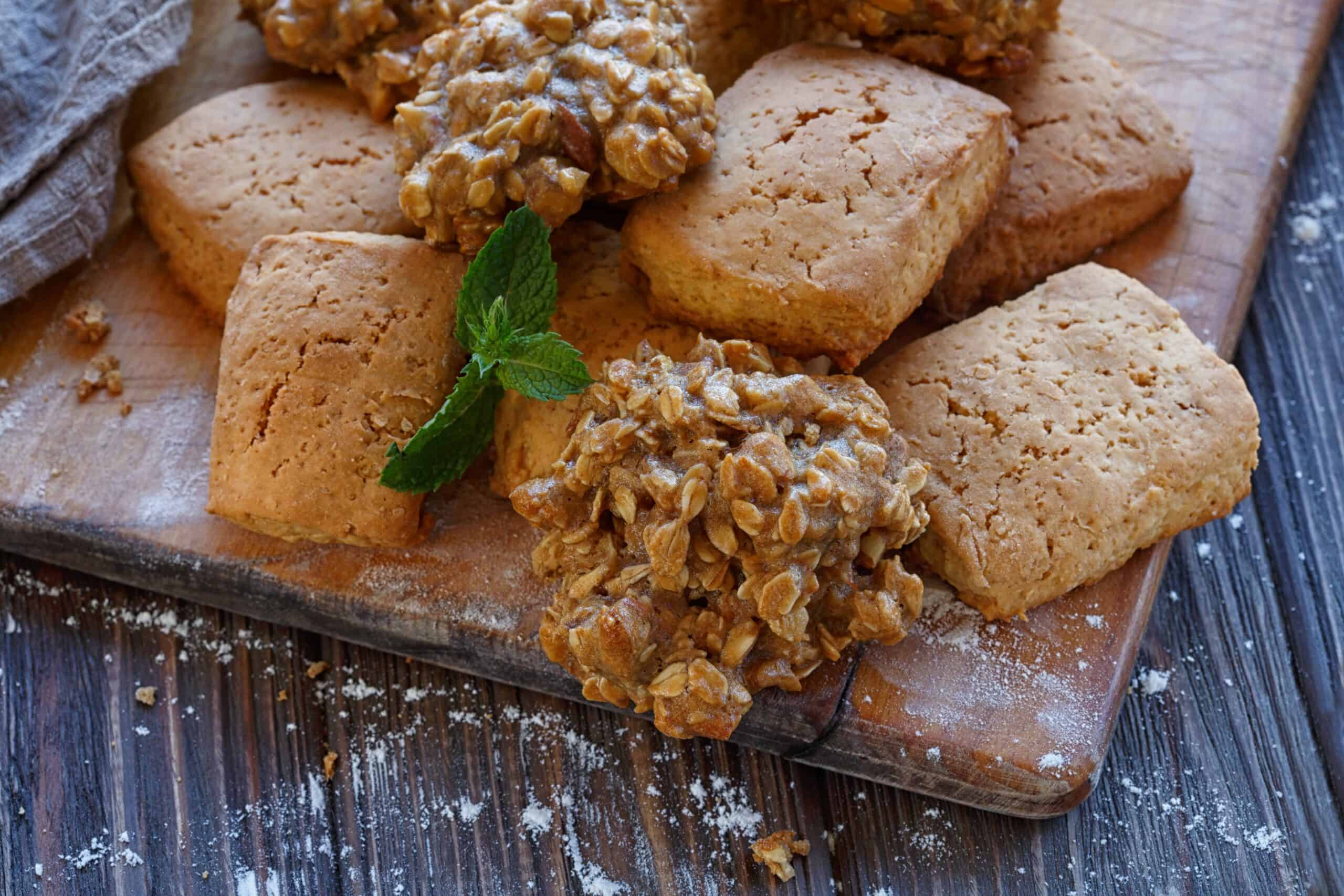
Optimizing Carbohydrates Before and During Your Run
So how do you fuel before and during a half marathon?
Now that you understand how important carbohydrates are for running optimally, you’ll understand why simply fueling during your race isn’t enough.
You’ll also need to increase your carb intake in the days leading up to your half marathon. This is what runners call carbo loading.
That’s right, we said days, plural. Many marathon runners make the mistake of having the infamous pasta-heavy dinner the night before their big run, having kept their carbohydrates at typical proportions the week leading up to it. For other distances, you reference here for a comprehensive look at what to eat the week before a marathon.
The problem with the night before carb infusion? The infusion can be jarring for your body and may lead to digestion issues.
So in the week leading up to your race, make sure half of your plate is healthy carbohydrates like rice and potatoes. (If you’re not sure what to eat, it’s a great time to talk to a dietitian!)
Why rice and potatoes? They’re considered complex carbohydrates which are high in fiber and take longer to break down in your digestive system therefore having a longer-term positive effect on your blood glucose level as opposed to a “spike.”
As you get closer to race day, you’ll want to get more specific with your macros.
So how much should you eat before a half marathon? The morning of your race, make sure your pre-race breakfast contains about 2-4 grams of carbohydrates for every kilogram you weigh. (This is the perfect time to load up on the bagels for glucose!)
Some nervous runners wonder: is it okay to not eat before a half marathon?
The answer is: you should really try to eat something.
It should be something simple. Nothing new on race day. Make it part of your training regimen to eat breakfast so you’re prepared to have something in your stomach meal on the actual day.
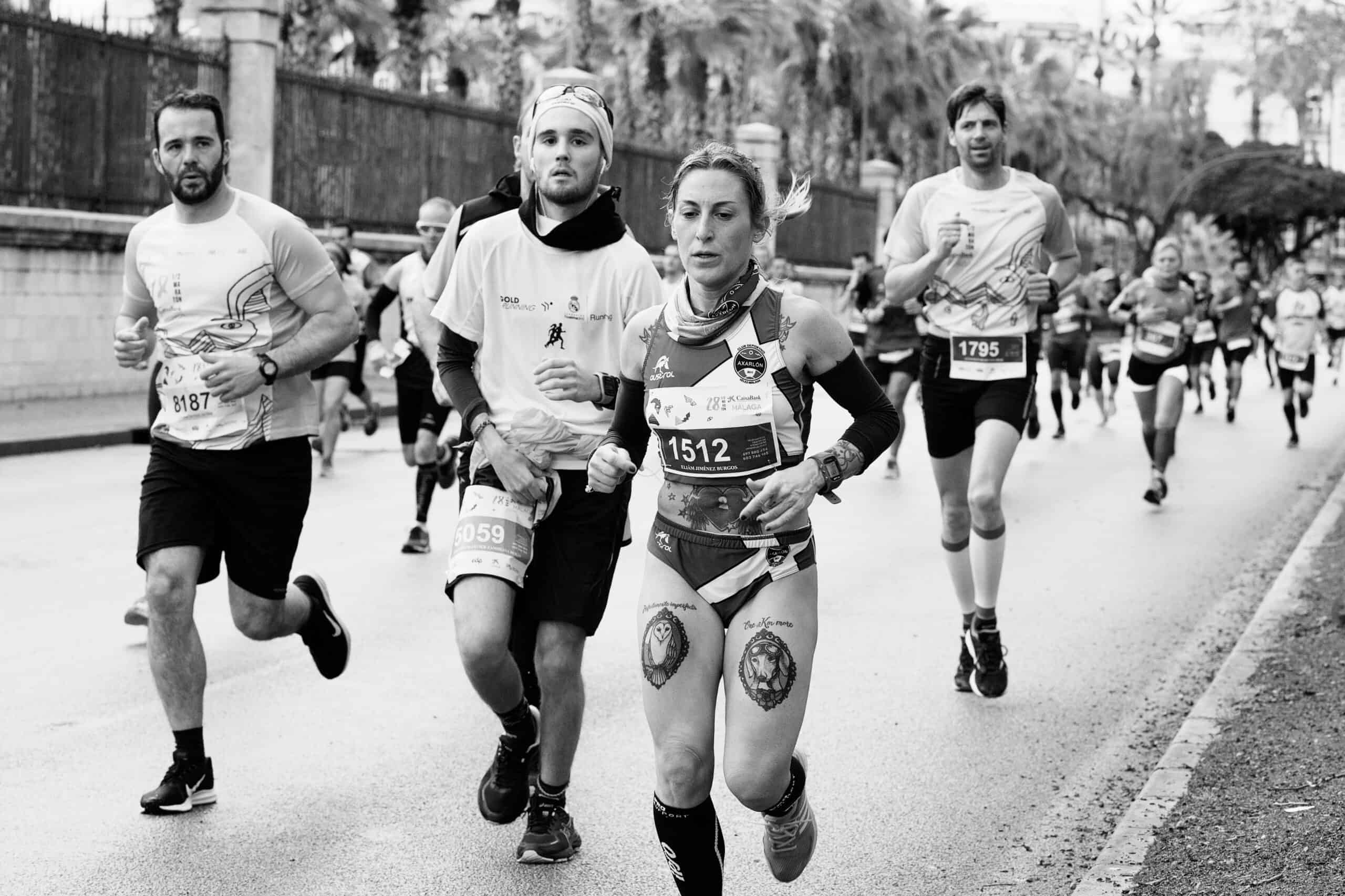
Half Marathon Fueling Strategy
How should you fuel during a half marathon? It mostly depends on your body. Everyone’s body burns through glycogen at a slightly different rate depending on their unique physiology, running speed, weight, amongst other environmental factors
However, there are some general guidelines you should follow. The first is to make sure you fuel before you feel the need to. When you begin to feel your energy drag, it’s much harder to recover than if you fueled before the fatigue!
If you’re new to running half marathons and find yourself working especially hard, a good rule of thumb is to fuel around the 45-minute mark. If you’re exerting yourself a little less, you may be able to hold off on fueling until about an hour into your run.
How many times should you fuel during a half marathon? You’ll want to continue fueling at an interval that works for you—the recommended is every 45 to 60 minutes. This should help you achieve your best half marathon!
Fueling Strategy by Mile
Would you rather use mile markers to determine when you need to fuel? To do this, you’ll need to know your average running pace.
For example, if you run an 8:30 mile and you’ve figured out your body likes fuel every 45 minutes, you should refuel about every five miles.
Working out some rough numbers can help give you an idea of when to fuel. But, ultimately you should focus on signals from your body.
During your long training runs, pay attention to when you start to feel lethargic, slow, irritated, dizzy or disoriented.
If that’s consistently happening at the 60-minute mark, or the four-mile mark, or whatever the case may be, you know you need to fuel before then.
More Factors to Consider While Fueling
When you start your half marathon training plan, there’s a lot to know. The information can feel overwhelming, but the good news is you can learn as you go.
If you follow the fueling parameters we’ve just shared, you’re all set to fuel during your first half marathons.
As you become more of a running veteran, you can tweak various fueling strategies and products to optimize your performance.
For example, you can adjust the amount of carbs you consume in preparation for and during your race based on the intensity at which you run.
Above, we recommended 2-4 grams of carbs for every kilogram of body weight. This is a good baseline, but if you’re running at a high intensity for a sustained period of time, you may need closer to 6 grams. Experiment to see what feels good for your body.
Staying hydrated should be considered as a vital part of your fueling plan. It helps deliver the nutrients from your fuel to your muscles, ensures your body uses carbs efficiently, balances your electrolytes, and can help keep your internal body temperature down.
So be sure to develop and test a hydration plan in addition to considering your fueling needs.
How to Hydrate for Your Next Half Marathon
What about hydration? Most runners during a half marathon should be taking small sips of water every 15 minutes or 2 cups every hour.
Many half marathon race directors plan their aid stations based on this metric.
Part of any good hydration strategy is consumption before the race as well. Runners should consume between 2 glasses 1-2 hours before race time.
Hydration amounts will vary per individual physiology and weather conditions. It’s important to pay attention to consistent intake to avoid dehydration but simultaneously be mindful of over-hydration.
In short: drink little, and often.
Some races will allow runners to carry their own water during the half marathon. If it’s allowed by the race director, carrying a bottle or water pack is simply a the preference of the runner. If you’re interested in exploring in-race hydration, we recommend a lightweight hydration pack like a CamelBak or a carrying pack with room for a water bottle like the Flipbelt.
You can find our entire list of recommended products in our Half Marathon Gear Guide.
After your race, its recommended to consume 2-3 glasses of water with electrolytes or a sports drink in order to replenish lost salts through sweating. To replace lost sats, consider these best salt tablets for runners.
Post-race hydration is crucial, with the recommendation of consuming 16-20 ounces of sports drink immediately after the race.
The Best Foods to Fuel With
This is the fun part! Let’s talk about what foods you can eat to power your runs. So what is the best half-marathon fuel?
First, it’s important to know that running fuel is generally divided into two types.
There are whole food, unprocessed sources of fuel like bananas, dates, peanut butter, and raisins. There are also pre-packaged bars, energy gels, chews, gummies, sports drinks and more.
The type of fuel that’s right for you depends on your body, preferences and lifestyle. Some folks enjoy gels, Gatorade, and bars simply because they’re convenient.
Running gels, chews, etc are also designed specifically for endurance athletes like runners, meaning they’re formulated to be absorbed by your body as quickly as possible to give you energy faster.
They’re also made with a specific combination of nutrients that work best for distance runners. Gels and drinks are also easy to digest, unlike some fiber-rich whole foods.
On the other hand, some runners like to fuel with whole foods because they tend to have a higher nutritional value, are less processed, and don’t contain additives, preservatives or dyes.
These foods also tend to be more cost-effective than specialized running snacks, are easily available, and are generally considered environmentally friendly since they don’t come wrapped in plastic.
Like everything else in your running journey, you’ll need to experiment to determine what type of fuel works best for your body.
Keep in mind that how your body handles your chosen fuel will be contingent on many factors, like what you’ve eaten in the days leading up to your run, your hydration levels, the intensity at which you’re running and more.
Final Thoughts
When you’re first learning to fuel during your runs, it can feel overwhelming. You have tons of options for what to eat and limitless information about how and when to eat it. But try not to stress out!
The reality is your body is designed to make the best use of whatever fuel sources you put into it, and while small adjustments to your fueling regimen can ultimately make a difference in your running experience and race time, you’ll have time to focus on those when you’ve got a few half marathon races under your belt.
For now, simply remember to increase the carbs in the week leading up to your run (aim for carbs on half your plate!) and to fuel before you start to feel yourself losing energy. For most folks, this is somewhere between the 45 to 60-minute mark, but if you feel you need fuel before that, don’t hesitate to load up.
Real food and pre-packaged gels, chews, bars and more can both be excellent energy sources to fuel your run. Which you choose will depend on your values, finances, and which foods you find feel best in your body.
Remember that, like the rest of your running experiment, learning how to fuel correctly during a long-distance run is part of the experience. With every mistake you make and lesson you learn, you come closer to the finish line.

